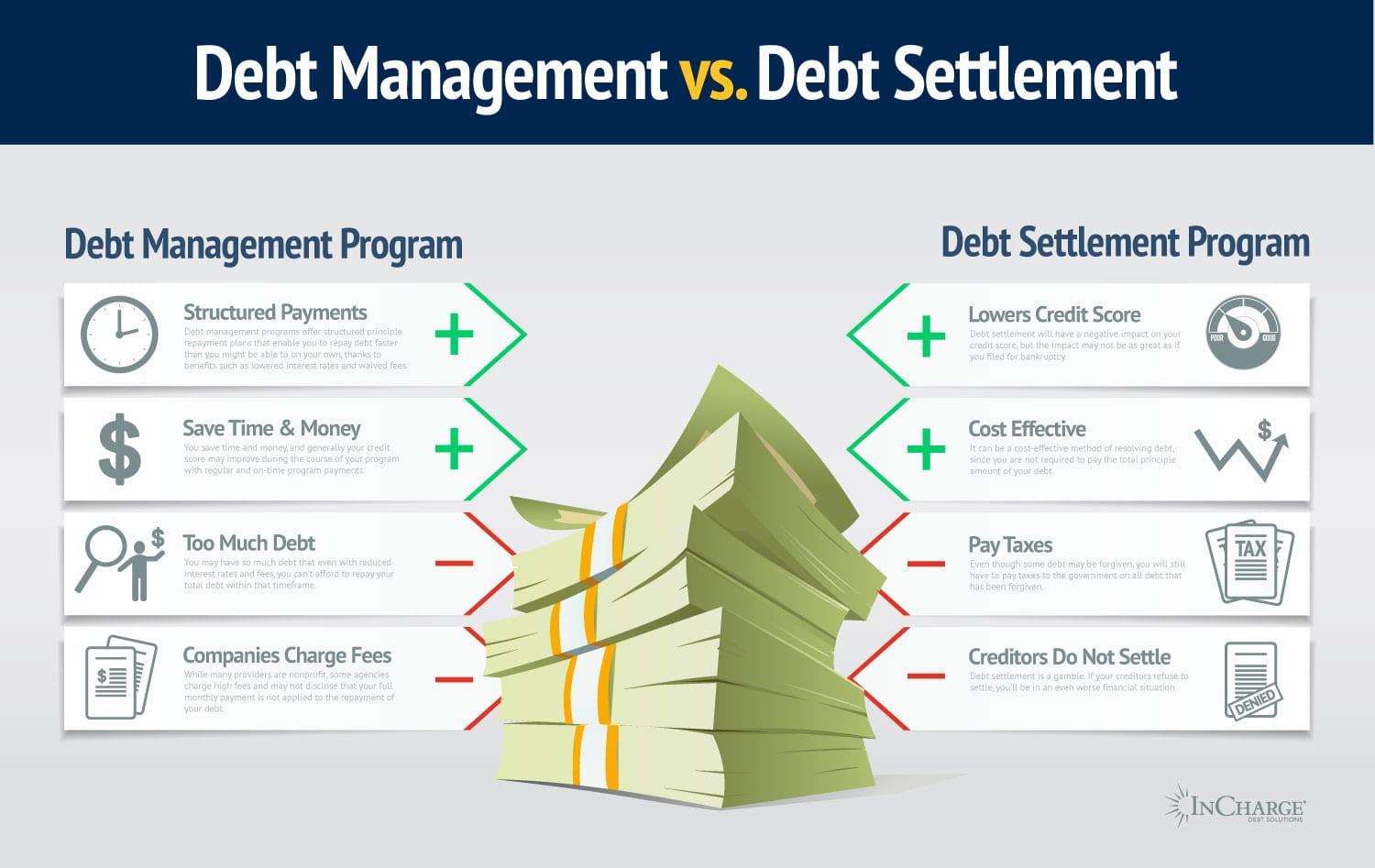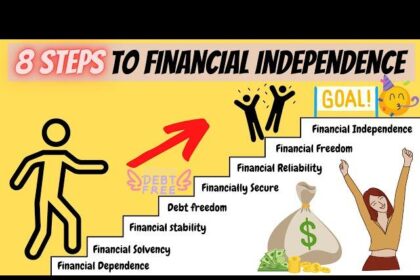In the intricate tapestry of personal finance, debt management stands out as both a challenge and an opportunity—a balancing act between desire and responsibility. For many, the journey through the world of debt can feel like navigating a dense forest, where each decision has the potential to lead to either freedom or further entanglement. From student loans that promise a brighter future to credit card debts that can quickly spiral out of control, managing these financial obligations is a crucial skill in today’s economy. This article aims to illuminate the pathways of debt management, exploring strategies, tools, and insights that empower individuals to regain their financial footing and pave the way toward a more secure financial landscape. Whether you’re grappling with overwhelming expenses or simply seeking to refine your financial strategy, understanding the nuances of debt management can serve as a compass guiding you toward fiscal wellness.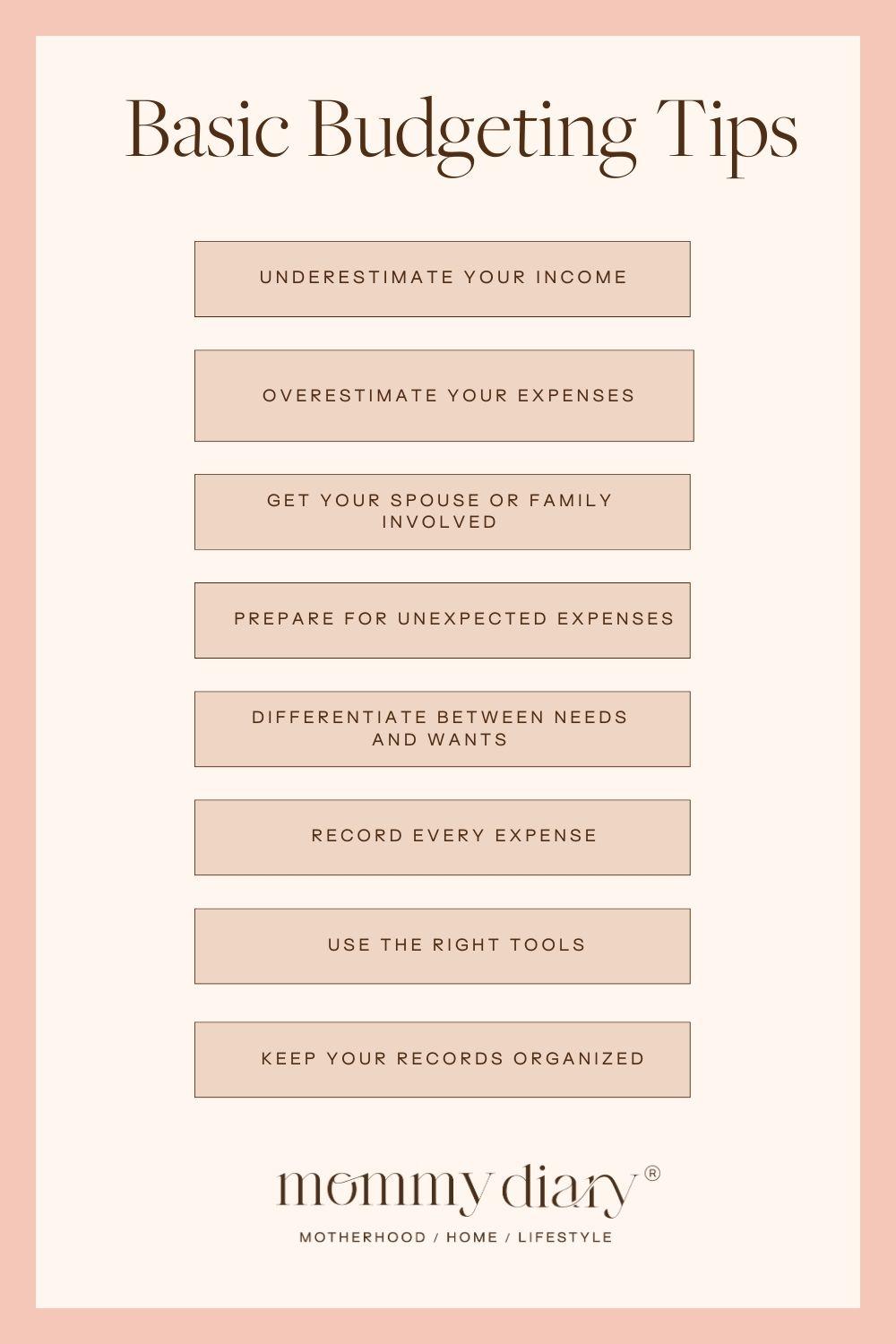
Budgeting Tips
Mastering your budget is pivotal when it comes to managing debt effectively. Start by tracking your expenses meticulously; this will illuminate spending habits that might need adjustment. Focus on distinguishing between needs and wants to prioritize necessary expenditures. Create a monthly budget that allocates specific amounts to various categories, ensuring you set aside funds for both debt repayment and savings. Consider using budgeting tools or apps to streamline this process, as they can provide a clearer picture of your financial landscape.
Implementing the 50/30/20 rule can also be beneficial. This strategy suggests allocating 50% of your income to necessities, 30% to discretionary spending, and 20% to savings or debt repayment. Here’s a simple structure to visualize how your budget can be distributed:
| Category | Percentage |
|---|---|
| Essentials (Housing, Food, etc.) | 50% |
| Discretionary Expenses (Entertainment) | 30% |
| Savings/Debt Repayment | 20% |
Adjusting your spending according to this framework can significantly enhance your ability to pay down debt while still enjoying life. Regularly revisiting and revising your budget is crucial as circumstances change; it allows you to stay on top of your financial goals and make informed decisions, ultimately steering you towards a debt-free future.

Debt Management
Managing debt effectively is essential for maintaining financial health and achieving long-term security. A well-structured strategy enables individuals to regain control over their finances while reducing stress associated with financial obligations. Key components of a successful plan include:
- Assessing overall debt: Understanding the total amount owed, including interest rates, fees, and minimum payments.
- Prioritizing debts: Identifying high-interest or urgent debts to tackle first can save money in the long run.
- Creating a budget: A comprehensive budget allows you to allocate funds toward debt repayment while managing living expenses.
- Exploring consolidation options: Combining multiple debts into a single loan can simplify payments and potentially lower interest rates.
Adopting a proactive approach to can pave the way for a brighter financial future. Implementing changes to spending habits and lifestyle can significantly contribute to your debt-free journey. Consider the following strategies to enhance your efforts:
- Increase income sources: Look for part-time work or freelance opportunities to boost your earnings.
- Negotiate with creditors: Reach out to your lenders to discuss lower interest rates or extended payment plans.
- Stay consistent: Regularly monitor your progress and celebrate milestones to maintain motivation.
| Debt Type | Interest Rate | Minimum Payment |
|---|---|---|
| Credit Card | 18% | $50 |
| Personal Loan | 10% | $100 |
| Student Loan | 5% | $150 |

Saving for Retirement
While managing debt is essential for financial health, it’s equally crucial to set aside funds for the future. By establishing a dedicated retirement savings plan, you can ensure that your golden years are spent without financial strain. Consider these strategies to effectively juggle debt management and retirement savings:
- Prioritize High-Interest Debt: Focus on paying off high-interest loans first to free up cash flow.
- Utilize Employer Contributions: Take full advantage of any employer-sponsored retirement plans, such as 401(k) matches.
- Automate Savings: Set up automatic contributions to your retirement accounts, ensuring you pay yourself first.
Moreover, budgeting wisely can create room for both debt repayment and retirement funding. Employ the 50/30/20 rule for a balanced approach:
| Allocation | Percentage |
|---|---|
| Needs | 50% |
| Wants | 30% |
| Debt Repayment & Savings | 20% |
This simple framework enables you to allocate resources not only towards retiring debt but also towards building a nest egg for your future. Balance is key, and creating a plan that encompasses both aspects will pave the way for a secure financial journey.

Emergency Fund Planning
When managing your debts, one essential aspect that often gets overlooked is ensuring you have an adequate safety net. An emergency fund acts as a cushion against unexpected expenses, such as medical bills or urgent car repairs, allowing you to focus on paying down your debts without incurring additional stress. This financial buffer can help you avoid the cycle of putting expenses on credit cards, which can lead to deeper debt. Here are a few tips for building a robust emergency fund:
- Set a Goal: Aim for three to six months’ worth of living expenses.
- Automate Savings: Set up automatic transfers to your savings account each payday.
- Start Small: Begin with a manageable amount like $500 or $1,000.
In your journey to eliminate debt, having this financial cushion can not only provide peace of mind but also empower you to make informed financial decisions. Without an emergency fund, a single unexpected expense can derail your repayment plan and lead to a heavier reliance on credit. Consider the following strategies to accelerate the growth of your emergency savings:
| Strategy | Benefits |
|---|---|
| Side Hustle | Increases income for quicker savings accumulation. |
| Budget Review | Identifies non-essential expenses to cut. |
| Cash Windfalls | Redirect bonuses or tax refunds directly to savings. |
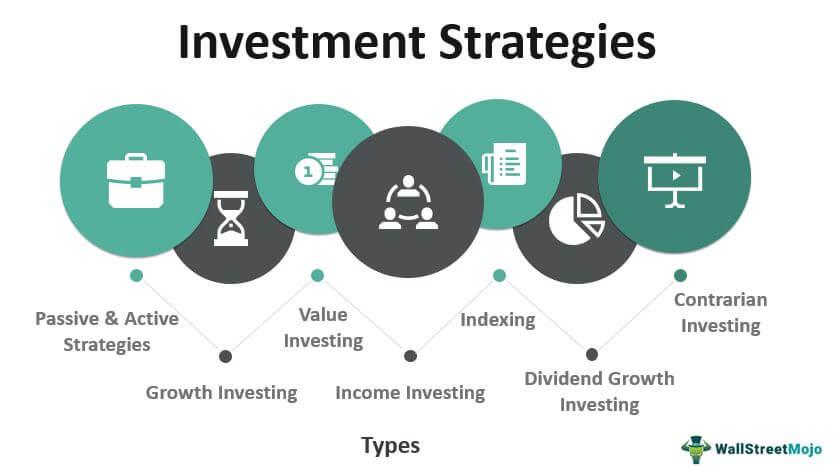
Investment Strategies
Effective debt management is a cornerstone of a successful investment strategy. It enables individuals to minimize interest expenses, enhance credit scores, and free up cash for investment opportunities. To achieve optimal results, one must consider adopting a multifaceted approach which includes:
- Prioritizing High-Interest Debt: Focus on paying off debts with the highest interest rates first to reduce overall repayment amounts.
- Creating a Budget: Develop a budgeting plan that allocates a specific portion of income towards debt repayment while allowing for savings and investments.
- Exploring Consolidation Options: Consider consolidating multiple debts into a single loan with a lower interest rate, simplifying payments and potentially saving money.
- Setting Clear Financial Goals: Define short-term and long-term financial objectives to maintain motivation and discipline in debt repayment.
Additionally, the following strategies can enhance your debt management plan:
| Strategy | Benefit |
|---|---|
| Automated Payments | Prevents missed payments and enhances credit score. |
| Negotiating Lower Rates | Can significantly reduce interest expenses. |
| Using Windfalls Wisely | Allocating unexpected income toward debt can accelerate repayment. |

Stock Market Investing
When considering how to successfully navigate the turbulent waters of , effective debt management becomes crucial. The interplay between personal finances and investment strategies can significantly influence an investor’s ability to capitalize on market opportunities. Understanding your debt allows you to allocate funds strategically, ensuring that you are not over-leveraged when entering the stock market. Here are some key factors to consider:
- Debt-To-Income Ratio: Keep track of how much of your income is allocated to debt repayment.
- Emergency Fund: Maintain a buffer to cover unforeseen expenses without tapping into investment funds.
- Interest Rates: Prioritize paying down high-interest debt, which can weigh down your financial flexibility.
Investing while managing debt requires a balance that encourages sustainable growth. Creating a strategic investment plan starts with assessing how your debts can impact your capacity to invest. To illustrate, consider a simple breakdown of potential cash flow after managing debt obligations:
| Monthly Income | Debt Payments | Remaining for Investment |
|---|---|---|
| $5,000 | $1,500 | $3,500 |
| $5,000 | $800 | $4,200 |
As shown in the table above, lower debt payments can considerably increase the amount available for investing, ultimately providing more opportunities for wealth accumulation. Striking this equilibrium enables you to participate in the stock market with confidence while keeping your financial health intact.

Real Estate Investment
Investing in real estate often comes with the responsibility of managing debt effectively. Understanding the principles of leverage in real estate can help you maximize your returns while minimizing risk. Utilizing borrowed funds can increase your buying power, allowing you to acquire properties that might otherwise be out of reach. However, it’s crucial to keep a close eye on interest rates, payment structures, and market conditions to avoid falling into financial distress.
Key strategies to consider include:
- Cash Flow Analysis: Ensure your rental income covers debt payments.
- Refinancing Options: Explore lower interest rates to reduce monthly payments.
- Diversifying Investments: Spread your risk across different properties to stabilize income.
| Debt Management Strategy | Benefits |
|---|---|
| Fixed-Rate Mortgages | Predictable payments, protection against rate hikes |
| Pay Down High-Interest Debt | Improves cash flow, reduces overall interest |
| Invest in Income-Generating Properties | Consistent cash flow can offset debt costs |

Credit Score Improvement
Improving your credit score is a crucial step toward effective debt management. A good credit score not only increases your chances of loan approval but can also secure lower interest rates, ultimately saving you money. Here are some key strategies to enhance your creditworthiness:
- Consistency in Payments: Always pay your bills on time, as late payments can severely impact your score.
- Credit Utilization: Try to keep your credit utilization ratio below 30%. This means using less than 30% of your available credit.
- Diverse Credit Mix: A healthy mix of credit types (credit cards, installment loans, etc.) can positively influence your score.
Moreover, regular monitoring of your credit report is essential. By checking your report, you can dispute any inaccuracies that may lower your score. Consider obtaining your report annually or using one of the many services that provide ongoing updates. Take note of these essential factors that contribute to your credit score:
| Factor | Impact on Score |
|---|---|
| Payment History | 35% |
| Credit Utilization | 30% |
| Length of Credit History | 15% |
| Types of Credit Used | 10% |
| New Credit Inquiries | 10% |

Financial Independence
Achieving begins with understanding and managing your debts effectively. Prioritizing debt repayment is crucial; not all debts are created equal. Focus on tackling those with the highest interest rates first, such as credit card debts, while ensuring to make minimum payments on others to avoid penalties. Consider employing the debt snowball method, where you pay off your smallest debts first, which can boost your motivation. Keep track of your expenses and income through a well-structured budget to assess where your money is going and to identify areas for improvement.
Your road to financial freedom is paved with strategic decisions regarding expenditure and debt accumulation. Implementing automatic savings can also serve as a safeguard against overspending. Here are key points to remember in your debt management journey:
- Create a debt repayment plan: Outline your debts, interest rates, and minimum payments.
- Seek professional advice: A financial advisor can offer personalized strategies.
- Educate yourself: The more you know about personal finance, the better your decisions.
| Debt Type | Interest Rate | Payment Strategy |
|---|---|---|
| Credit Card | 18% | Pay Off First |
| Personal Loan | 10% | Next to Pay |
| Student Loan | 5% | Minimum Payment |
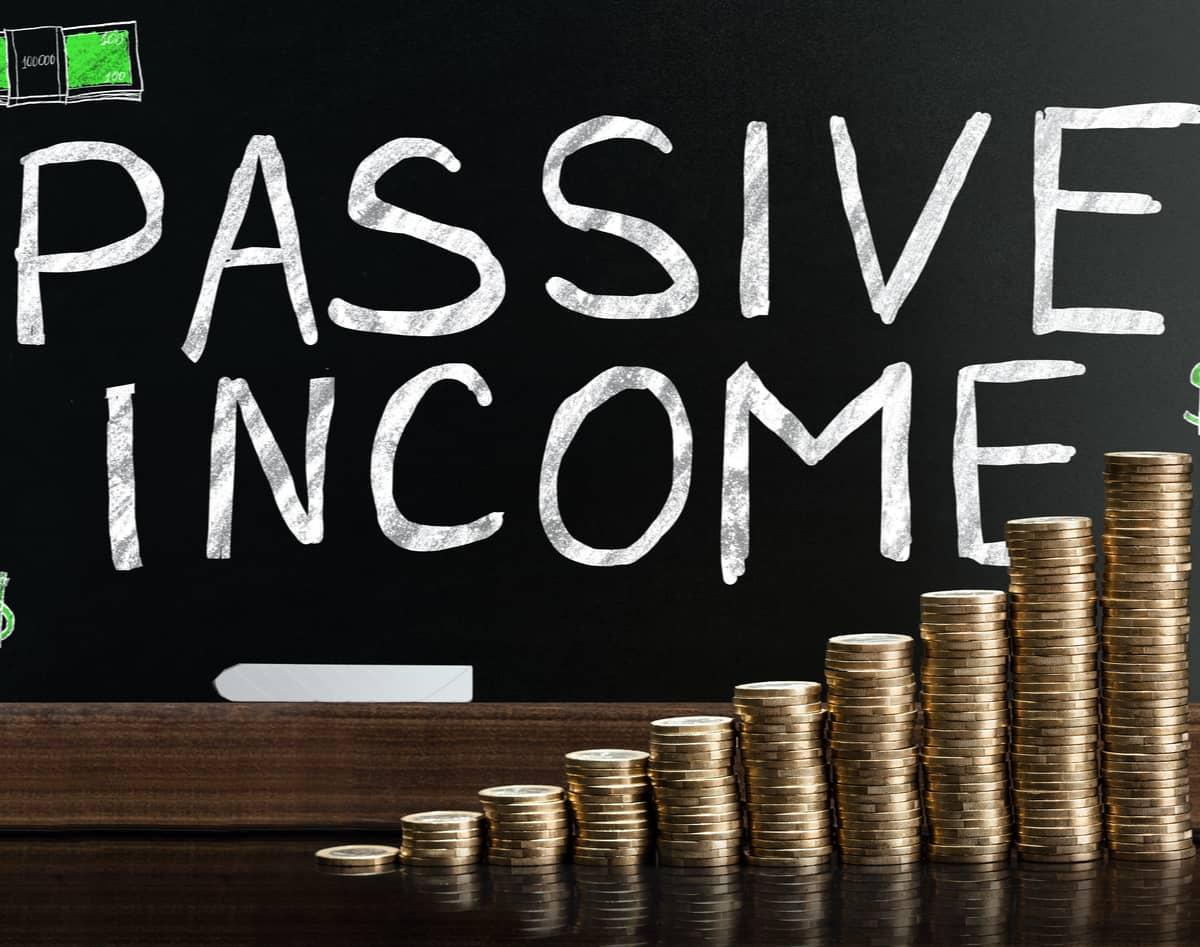
Passive Income Streams
Exploring ways to generate income while managing debt can lead to financial freedom. Passive income is a viable strategy that allows you to earn money without constant active involvement. By diversifying your sources, you can create a safety net that cushions your debt repayment journey. Here are some inventive approaches to consider:
- Real Estate Investments: Consider purchasing rental properties or joining real estate investment trusts (REITs) to earn monthly rental income.
- Dividend Stocks: Investing in stocks that pay dividends can generate regular income, helping to offset debt repayments.
- Online Courses: Create educational content and sell it online, generating income each time someone enrolls.
- Peer-to-Peer Lending: Align yourself with platforms that allow you to lend money and earn interest, turning your funds into a source of revenue.
Implementing can provide an effective counterbalance to debt needs. Additionally, leveraging technology can simplify many of these income-generating opportunities. To illustrate how these avenues can contribute to your overall financial strategy, consider the following table:
| Income Stream | Initial Investment | Monthly Earning Potential |
|---|---|---|
| Real Estate Rentals | $20,000+ | $1,000+ |
| Dividend Stocks | $5,000+ | $150+ |
| Online Courses | $500+ | $200+ |
| Peer-to-Peer Lending | $1,000+ | $50+ |
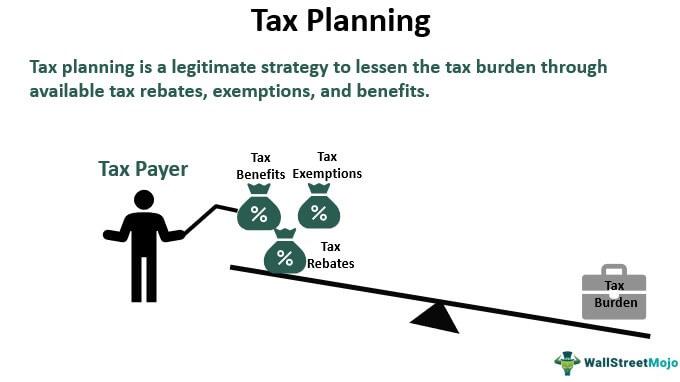
Tax Planning
Strategically navigating the intricate tapestry of tax obligations can not only mitigate financial stress but also provide opportunities for significant savings. By aligning your debt management strategies with a proactive tax approach, you can optimize your financial portfolio. Consider leveraging tax deductions associated with certain types of debt, such as mortgage interest and student loans. These deductions can effectively lessen your taxable income, thereby freeing up more capital to tackle existing debts.
Additionally, it’s essential to comprehend the nuances of debt that may incur tax liabilities. For instance, debt forgiveness can potentially lead to taxable income, which is a significant aspect often overlooked. To ensure that you’re making the most out of your situation, consult with a financial advisor and keep an organized record of all your debts alongside their related tax implications. Below is a simplified table that outlines various types of debt and their potential tax impacts:
| Type of Debt | Tax Implication |
|---|---|
| Mortgage Debt | Interest may be deductible |
| Student Loans | Interest may be deductible |
| Credit Card Debt | No tax benefit |
| Personal Loans | No tax benefit |
| Forgiven Debt | Potentially taxable income |
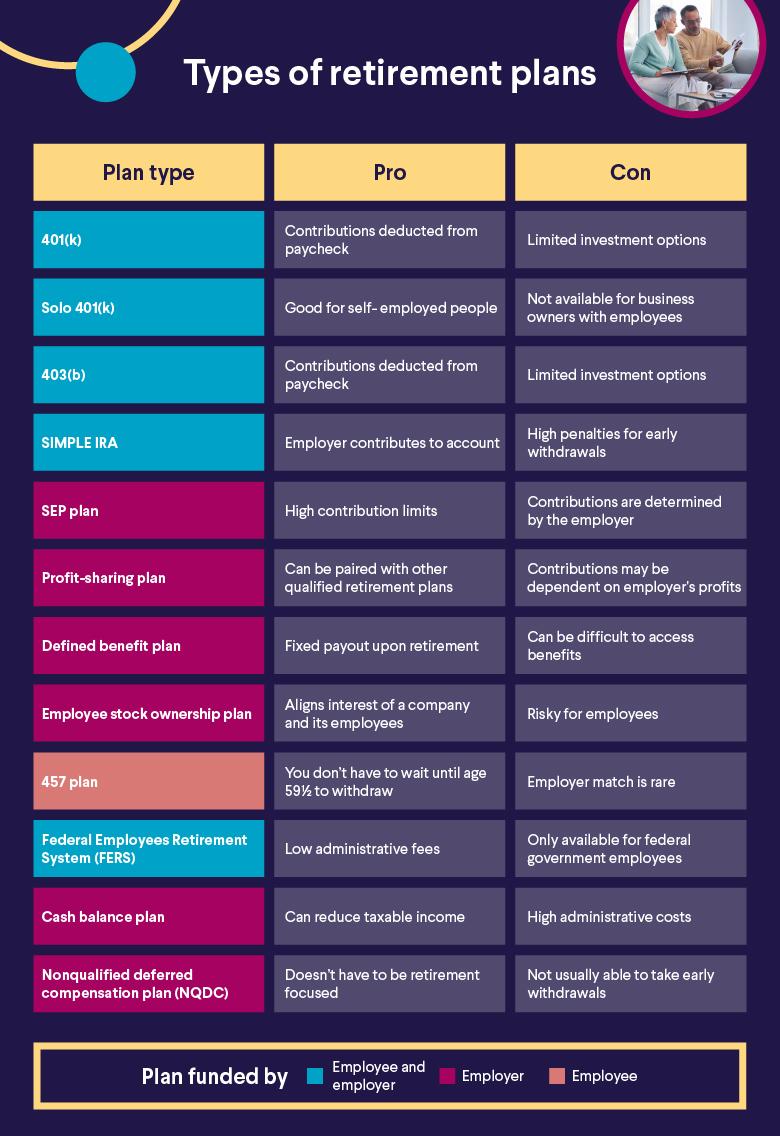
Retirement Accounts (IRA, 401k)
When tackling debt management, it’s crucial to consider not only how you handle your existing obligations but also how you prepare for future financial stability. Retirement accounts like IRAs and 401(k)s are essential tools in this journey. By contributing to these accounts regularly, you create a safety net that can alleviate the stress of debt later in life. While it may be tempting to divert funds from retirement savings to pay off immediate debts, it’s important to keep in mind the compounding interest and tax benefits that these accounts offer over time.
Here’s a quick comparison of the key features of traditional and Roth accounts, which can help you decide the best path for your retirement savings:
| Account Type | Contribution Limits | Tax Treatment |
|---|---|---|
| Traditional IRA | $6,500 (2023) | Tax-deductible contributions |
| Roth IRA | $6,500 (2023) | Tax-free withdrawals |
Additionally, if your employer offers a 401(k) plan, be sure to take full advantage of any matching contributions. This is essentially free money that can significantly boost your retirement savings, helping you to manage long-term financial obligations while still addressing your current debts. Remember to evaluate your debt repayment strategy alongside your retirement planning to create a balanced approach to achieving financial health.
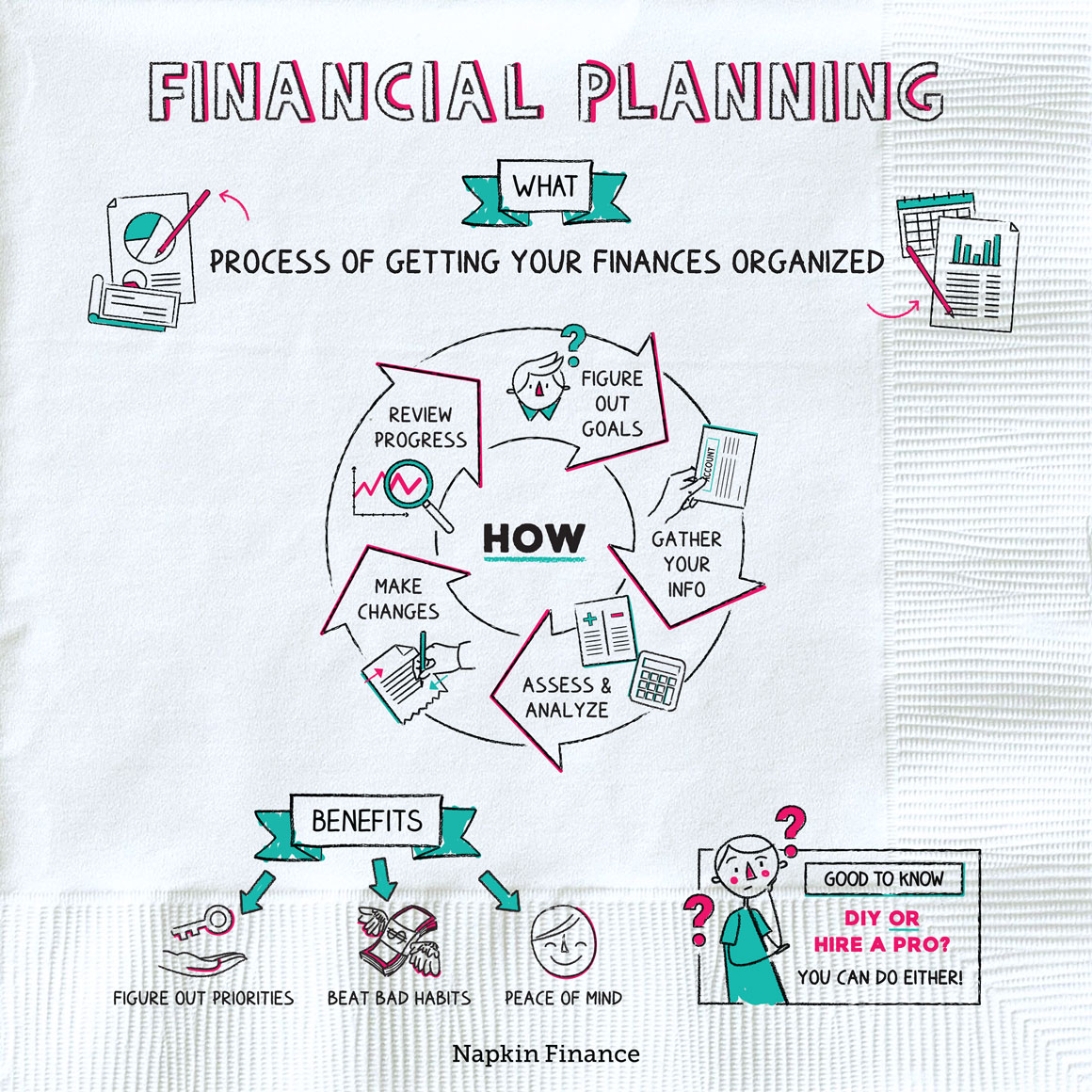
Financial Planning for Families
Managing debt is a crucial aspect of , as it lays the groundwork for a stable and secure financial future. To start, it’s essential to identify all sources of debt, which may include credit cards, student loans, mortgages, and personal loans. Organizing and categorizing these debts helps uncover a clear picture of what you owe and to whom. Here are some effective strategies for managing debt effectively:
- Create a budget: Assess your income and expenses to allocate funds specifically for debt repayment.
- Prioritize debts: Focus on high-interest debts first while making minimum payments on others.
- Explore consolidation options: Look into merging multiple debts into a single loan with a lower interest rate.
In addition, regular reviews of your financial progress can help in making informed decisions. Setting measurable goals, like reducing debt by a certain percentage each month, can motivate the entire family. Consider using the table below to track your debt repayment strategy:
| Debt Type | Total Amount | Monthly Payment | Interest Rate |
|---|---|---|---|
| Credit Card | $5,000 | $250 | 18% |
| Student Loan | $15,000 | $150 | 5% |
| Mortgage | $200,000 | $1,200 | 3.5% |
By actively managing debt and making informed choices, families can ensure financial well-being and pave the way for future savings and investments. Remember, communication within the family unit regarding financial matters can lead to better collaboration and accountability in debt management efforts.
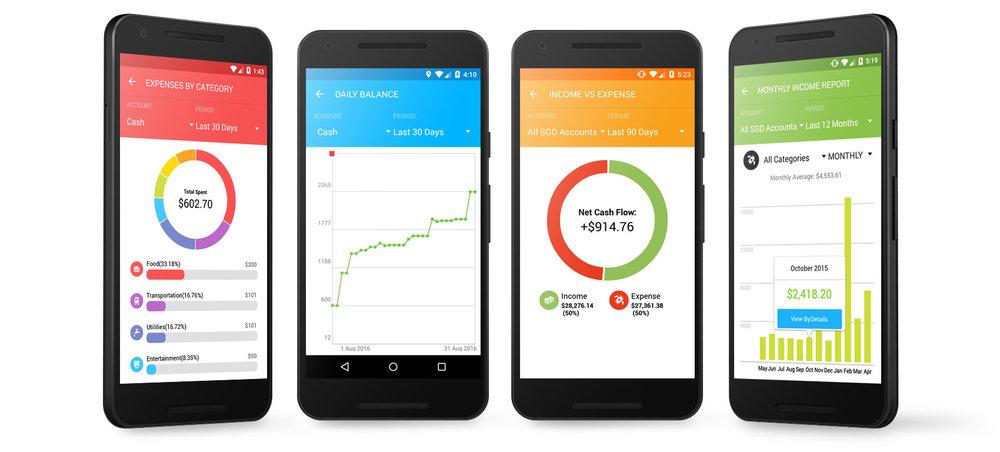
Personal Finance Apps
In today’s fast-paced world, managing debt effectively is paramount, and have emerged as powerful allies in this endeavor. These apps not only help individuals track their expenses but also provide tailored strategies for debt repayment. With features such as automated reminders for payments and customizable budget plans, users can visualize their financial health and stay motivated. Some popular applications include:
- Mint – Offers a comprehensive view of finances, including debt tracking.
- YNAB (You Need A Budget) – Focuses on proactive budgeting and debt reduction.
- Debt Payoff Planner – Specifically designed to help users strategize their debt repayment journey.
One of the standout features of these apps is their ability to break down debts into manageable chunks. This can be visually represented through interactive graphs that depict progress over time. Users can also input different debt scenarios, allowing them to see how increasing payments can lead to substantial savings on interest payments. Here’s a quick comparison of some features from popular apps:
| App | Debt Tracking | Budgeting Tools | Credit Score Monitoring |
|---|---|---|---|
| Mint | Yes | Comprehensive | Yes |
| YNAB | Yes | Focused | No |
| Debt Payoff Planner | Dedicated | Basic | No |

Student Loan Repayment
Managing student loans can feel like a daunting task, especially when balancing other financial obligations. However, developing a systematic approach can lead to financial freedom. Start by *assessing your loans* to understand interest rates, repayment terms, and total amounts owed. This will provide clarity and allow you to prioritize which loans to tackle first. Some effective strategies include:
- Choosing a repayment plan: Consider income-driven repayment plans if your income is low.
- Making extra payments: Any additional funds can significantly reduce your principal and interest over time.
- Consolidation or refinancing: Simplify your repayments or potentially lower your interest rate.
It’s also essential to stay informed about any changes in federal student loan policies that may affect repayment options. Additionally, consider the benefits provided by loan forgiveness programs for public service workers or those in specific professions. Below is a simple table illustrating common repayment options and their main characteristics:
| Repayment Option | Description | Eligibility |
|---|---|---|
| Standard Repayment | Fixed payments over 10 years. | All borrowers eligible. |
| Graduated Repayment | Starts with lower payments, increasing every two years. | All borrowers eligible. |
| Income-Driven Repayment | Payments based on income and family size. | Must demonstrate financial need. |

Debt-Free Journey
Embarking on the journey to a life free from debt can be both a challenging and rewarding experience. Creating a structured plan is essential in this pursuit, and it typically starts with a comprehensive assessment of your current financial status. Begin by listing your debts, including the creditor, interest rates, and minimum payments. This will help in identifying the best strategies to tackle your debt. Here are some effective methods you might consider:
- The Snowball Method: Focus on paying off your smallest debts first, gaining momentum as you go.
- The Avalanche Method: Prioritize debts with the highest interest rates for potential savings.
- Debt Consolidation: Combine multiple debts into a single loan with a lower overall interest rate.
As you progress, maintaining discipline and motivation is key. Set realistic goals and celebrate small victories along the way, such as paying off a specific debt or sticking to your budget for a month. It may also be beneficial to track your spending through a table, which visually displays your progress:
| Month | Debt Paid Off | Remaining Balance |
|---|---|---|
| January | $200 | $3,800 |
| February | $300 | $3,500 |
| March | $400 | $3,100 |
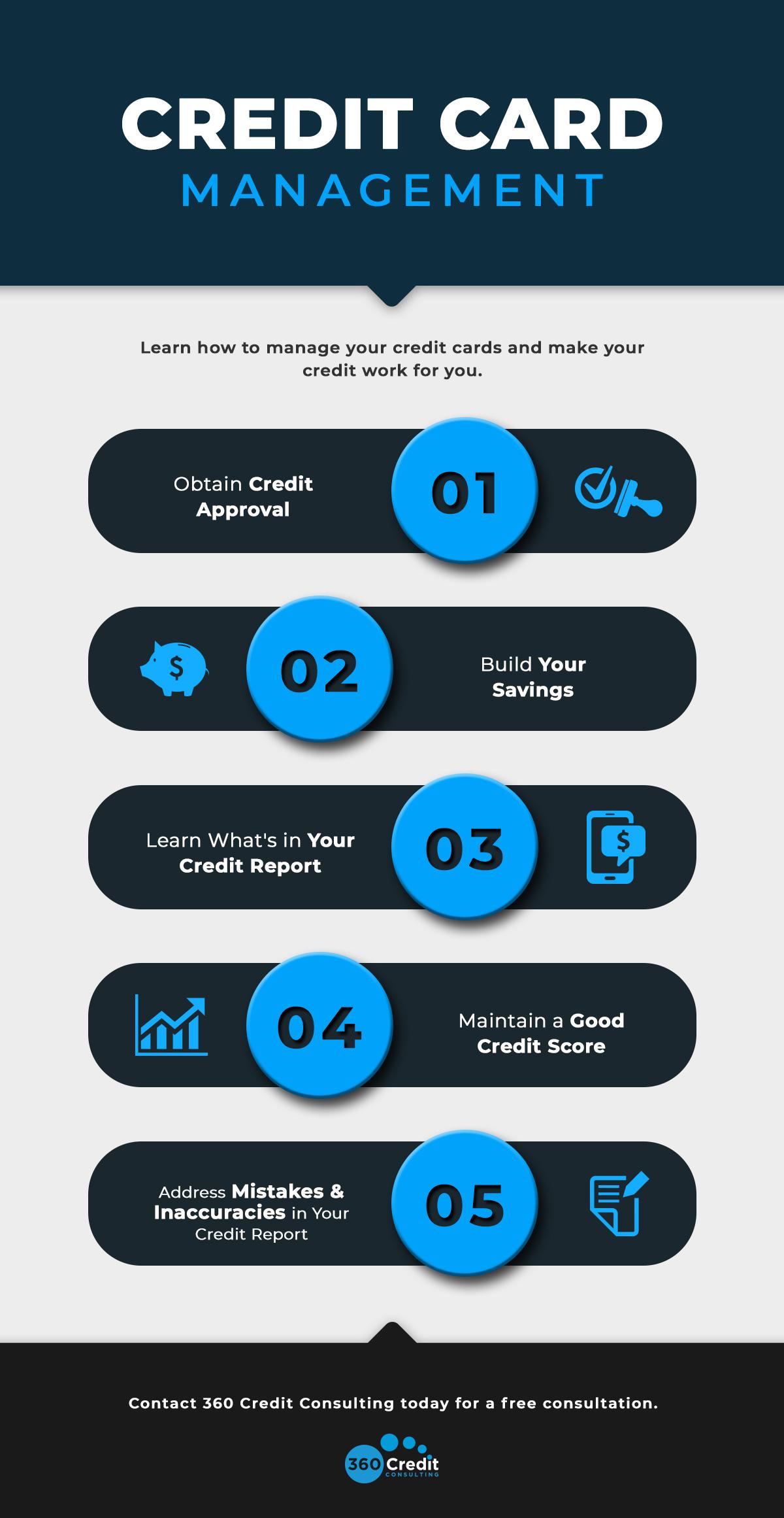
Credit Card Management
Effectively managing your credit cards is a crucial step in maintaining financial health. By adopting a strategic approach, you can avoid falling into a cycle of debt while also maximizing the benefits these cards offer. Here are some tips for successful :
- Monitor your spending: Keep track of your purchases to ensure you stay within your budget.
- Pay on time: Set reminders or automate payments to avoid late fees and interest rate hikes.
- Utilize rewards: Choose cards that align with your spending habits to make the most of cash back or travel points.
- Review statements: Check for errors or unfamiliar charges each month to stay informed of your financial activity.
Another key aspect of is understanding how credit utilization affects your score. Credit utilization refers to the percentage of your total credit limit that you are currently using. Keeping this ratio low is essential for a healthy credit score. Here’s a simple table to help you visualize this concept:
| Credit Limit | Current Balance | Utilization Rate |
|---|---|---|
| $5,000 | $1,500 | 30% |
| $10,000 | $2,500 | 25% |
| $3,000 | $800 | 26.67% |

Budgeting for Freelancers
Freelancers often encounter fluctuating income streams, making it essential to adopt effective budgeting strategies. Tracking your income and expenses meticulously is the cornerstone of financial stability. A clear overview will allow you to allocate funds not just for ongoing expenses, but also for savings and debt repayment. Here are some critical components to consider when creating a budget:
- Monthly Income Estimation: Calculate an average based on previous months, factoring in seasonal variations.
- Fixed and Variable Expenses: Classify your expenses to understand your spending patterns.
- Emergency Fund: Aim to save at least three to six months’ worth of living expenses for unexpected situations.
- Debt Repayment Plan: Prioritize high-interest debts to reduce financial strain.
To visualize your financial standing and plan for the future, consider using the following table as a sample budgeting framework:
| Category | Estimated Amount | Actual Amount |
|---|---|---|
| Monthly Income | $4,000 | $3,500 |
| Fixed Expenses | $1,500 | $1,500 |
| Variable Expenses | $800 | $650 |
| Debt Repayment | $600 | $600 |
| Savings | $1,100 | $750 |
This structured approach not only helps in managing debts effectively but also sets a solid foundation for future financial growth.

Frugal Living Tips
Managing debt doesn’t have to be an uphill battle; with a few clever strategies, you can regain control of your finances while embracing a more frugal lifestyle. Start by creating a detailed budget that tracks your income and expenses. Identify non-essential spending that can be trimmed back. For example, consider the following adjustments:
- Cut back on dining out: Opt for meal prepping at home instead.
- Cancel unused subscriptions: Audit your services and eliminate those you rarely use.
- Use public transportation: Save on gas and parking fees by using local transit options.
Moreover, prioritize paying off high-interest debts first. This method, often referred to as the avalanche method, allows you to save significantly on interest payments in the long run. If you need a visual representation of your debts versus payments, consider a simple comparison table:
| Debt Type | Balance | Interest Rate |
|---|---|---|
| Credit Card | $2,500 | 18% |
| Personal Loan | $5,000 | 12% |
| Student Loan | $10,000 | 5% |
By focusing on reducing your highest debts while maintaining your essential expenses, you create a path to financial freedom. Regularly reassess your strategies and adjust your budget as circumstances change, ensuring that you remain on track.

Side Hustles for Extra Income
In today’s fast-paced world, creating alternative income streams can be pivotal for a solid financial footing. Exploring various side hustles allows individuals to tackle debts while nurturing their passions. Consider options that are flexible and cater to your skills. A few popular pursuits include:
- Freelancing: Utilize your expertise in graphic design, writing, or programming.
- Online Tutoring: Share your knowledge in subjects you excel at through platforms like Chegg or Tutor.com.
- Reselling Products: Dive into second-hand markets or create handmade items to sell on sites like Etsy or eBay.
- Ride-Sharing or Delivery: Use platforms such as Uber or DoorDash to drive and earn on your schedule.
For those looking for more structured options, getting involved in remote part-time jobs can also help ease financial strains. Many companies are now offering roles that can be done from the comfort of home, bringing in a steady stream of income. Here’s a simple table summarizing some opportunities:
| Job Type | Estimated Hourly Rate |
|---|---|
| Virtual Assistant | $15 – $30 |
| Content Writer | $20 – $50 |
| Social Media Manager | $18 – $40 |
| Data Entry | $12 – $25 |
Pursuing these options not only aids in managing existing debts but also empowers you to grow your financial proficiency and stability.
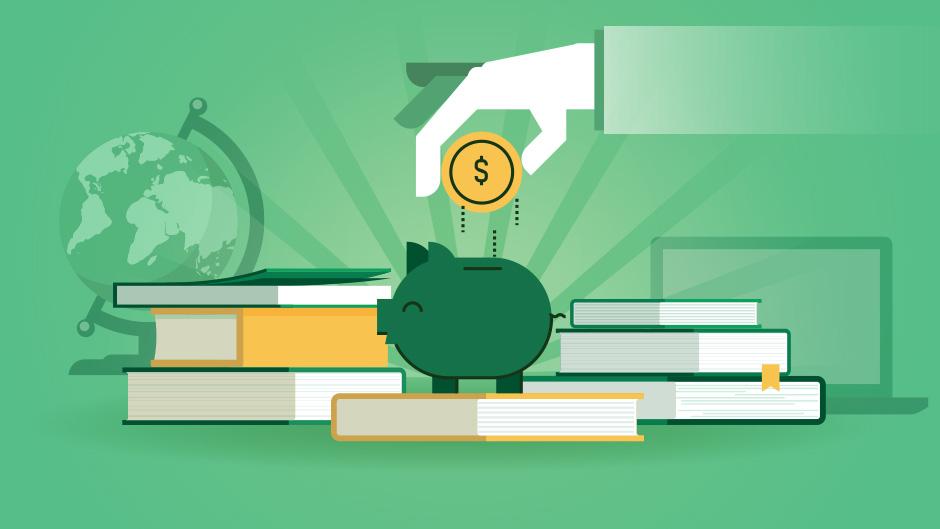
Financial Literacy Education
Mastering the art of managing debt is a crucial skill in today’s financial landscape. Understanding the types of debt one might incur, from student loans to credit card balances, lays the foundation for effective management. Here are a few key strategies to consider:
- Create a budget: Understand your income and expenses to allocate funds for debt repayment.
- Prioritize high-interest debt: Focus on paying down debts with the highest interest rates first.
- Explore consolidation options: Look into consolidating multiple debts into a single loan with a lower interest rate.
- This will help keep you organized: Track your debt repayment progress to stay motivated.
Additionally, establishing a strong relationship with creditors can often lead to beneficial arrangements. Initiate communication when facing difficulties, as they may offer temporary relief options. Consider the following tips to facilitate a healthier dialogue:
- Be honest about your situation: Transparency can help creditors understand your needs.
- Negotiate terms: Sometimes, creditors are willing to lower payments or interest rates.
- Stay proactive: Address potential problems before they become more serious.

Insurance Planning
Effective financial management includes a strategic approach to safeguarding your assets. By incorporating into your debt management strategy, you ensure that your financial responsibilities are backed by protective measures. This not only provides peace of mind but also reinforces your ability to tackle any unforeseen challenges you may encounter while managing debts. Consider the following types of insurance that can bolster your financial resilience:
- Life Insurance: Protects dependents in case of untimely death.
- Disability Insurance: Offers income replacement if you cannot work due to illness or injury.
- Health Insurance: Minimizes medical expenses that can escalate debt levels.
- Property Insurance: Covers loss of assets, thus protecting your financial investment.
By weaving insurance into your financial tapestry, you create a buffer that aids in maintaining your debt obligations. A well-thought-out policy can act as a safeguard, allowing you to pay off debts without the stress of potential emergency expenses. Additionally, consider creating a simple comparison table to visualize your options:
| Type of Insurance | Key Benefits | Considerations |
|---|---|---|
| Life Insurance | Secures family finances | Premiums can vary widely |
| Disability Insurance | Replaces lost income | May require medical assessment |
| Health Insurance | Covers unexpected medical bills | Policy coverage varies greatly |
| Property Insurance | Protects assets | Check for coverage exclusions |

Long-Term Wealth Building
Building lasting wealth begins with a solid foundation of effective debt management. Understanding your debts is crucial; they can be classified into two main categories: good debt and bad debt. Good debt can pave the way to financial growth, such as mortgages or education loans, while bad debt, like credit card debt, can hinder your progress. Assessing the types of debts you hold allows you to strategize better on how to tackle them, prioritize repayments, and ultimately, free up resources for investment in assets that can appreciate over time. Aim to maintain a healthy debt-to-income ratio, which is vital for your financial health.
To facilitate your journey toward long-term wealth, consider implementing the following strategies: 1. Create a budget that allocates funds for debt repayments while still allowing for savings or investments. 2. Pay off high-interest debts first to minimize the cost of borrowing. 3. Explore refinancing options that can lower your interest rates and monthly payments. 4. Establish an emergency fund to avoid falling back on credit during unexpected situations. Focusing on these core principles ensures that your debt becomes a stepping stone to wealth rather than a stumbling block.

Saving for College
One of the most effective strategies for affording higher education is to start saving early. By setting aside a small portion of your income regularly, you can cultivate a robust college fund that grows over time. Consider using a 529 savings plan, which offers tax advantages and can be a powerful tool for building your college savings. Here are some other methods to consider:
- Automate savings: Set up automatic transfers to your college savings account each month.
- Open a high-yield savings account: Look for accounts that offer competitive interest rates.
- Utilize financial gifts: Encourage family members to contribute to your child’s education fund during holidays and birthdays.
It’s essential to have a clear and organized plan when . Creating a budget that outlines your savings goals can help you stay on track. Below is a simple table that illustrates how small, consistent contributions can make a significant impact over time:
| Monthly Contribution | Annual Contribution | Estimated Total in 10 Years |
|---|---|---|
| $100 | $1,200 | $12,000 |
| $200 | $2,400 | $24,000 |
| $500 | $6,000 | $60,000 |

Estate Planning
One critical aspect often overlooked in financial discussions is the intricate relationship between debt management and future . Individuals who carry substantial debt may inadvertently burden their heirs, complicating the distribution of assets upon death. Therefore, it is crucial to assess and organize debts alongside your overall estate plan. This ensures a smoother transition for your beneficiaries and minimizes potential conflicts. Key strategies include:
- Prioritizing debt repayment: Focus on high-interest debts first.
- Communicating with creditors: Negotiate terms where possible to lighten the load.
- Creating a debt inventory: Maintain a clear record for beneficiaries.
Additionally, building a strong foundation of financial health can significantly enhance one’s estate. Maintaining adequate life insurance and considering financial instruments like trusts can protect your assets while ensuring your debts are settled. Understanding the implications of your financial decisions today can help safeguard your estate for tomorrow. Here’s a quick overview of essential elements to consider:
| Element | Description |
|---|---|
| Debt Assessment | Evaluate total debts versus assets. |
| Insurance Policies | Consider life insurance to cover debts. |
| Trusts | Utilize trusts to manage asset distribution. |

Financial Goals Setting
When it comes to managing debt, setting clear financial goals is crucial. It starts with understanding where you stand financially. Creating a comprehensive budget can help you identify your income, necessary expenses, and the amount available to tackle your debts. Consider breaking your debt down into manageable chunks by following these strategies:
- Assess Your Debt: List all your debts, including interest rates and minimum payments.
- Prioritize Payments: Focus on high-interest debts first to minimize overall interest costs.
- Set Specific Targets: Define monthly or yearly milestones for debt reduction.
Once you have a clear understanding of your situation, you can create a debt payoff plan that aligns with your goals. This plan could include various approaches, such as the snowball method or the avalanche method. To keep track of your progress, consider using the following table to visualize your journey:
| Debt Type | Total Amount | Monthly Payment | Interest Rate |
|---|---|---|---|
| Credit Card | $5,000 | $200 | 18% |
| Personal Loan | $10,000 | $300 | 12% |
| Car Loan | $15,000 | $400 | 7% |

Money Management for Couples
Managing debt as a couple requires open communication and a unified approach to finances. It’s crucial to both set common financial goals and understand each partner’s individual debt situation. Begin by creating a shared spreadsheet or document that outlines all debts, including amounts owed, interest rates, and payment due dates. This transparent overview helps you establish priorities and formulate a repayment strategy. Consider the debt snowball method, which focuses on paying off smaller debts first to gain momentum, or the debt avalanche method, which targets high-interest debts. Engaging in these conversations can build trust and collaboration as you face financial challenges together.
Another key aspect is to establish a joint budget that accommodates debt repayment while allowing for some personal spending. A well-structured budget may include:
- Debt payments: Allocate a fixed amount each month towards paying down debts.
- Essential expenses: Track and limit spending on necessities like housing and groceries.
- Discretionary spending: Set aside allowances for personal spending to maintain individual happiness.
Consider scheduling regular finance meetings to review your progress, adjust budgets, and celebrate milestones. This helps foster accountability and strengthens your partnership. By approaching debt management together, you can create a more secure financial future while deepening your relationship.

Family Budgeting
Managing a family budget is essential for maintaining financial stability, especially when tackling debt. To ensure a smooth budgeting process, consider these key strategies:
- Track your expenses: Monitor every dollar spent to better understand your spending habits.
- Set financial goals: Establish short-term and long-term objectives, such as saving for a vacation or paying off loans.
- Prioritize debt repayment: Focus on high-interest debts first to minimize costs over time.
- Allocate funds wisely: Create dedicated categories within your budget for necessary expenses, savings, and debt payments.
Creating a well-defined budget can help reduce anxiety around financial responsibilities. You may want to visualize your budget breakdown by using a simple table format:
| Category | Amount ($) |
|---|---|
| Housing | 1,200 |
| Utilities | 300 |
| Groceries | 500 |
| Debt Payments | 400 |
| Savings | 300 |
This table reflects a typical family budget where conscious allocation helps balance necessary expenses with debt management. By regularly reviewing and adjusting your budget, you can stay on track and work towards a debt-free future.

Smart Spending Habits
Adopting effective spending habits can significantly impact your journey toward financial freedom. By prioritizing essential expenses and finding ways to curtail unnecessary spending, you can direct more of your income toward paying off debt. Here’s how you can refine your approach to everyday purchases:
- Track your expenses: Keep a detailed record of your expenditures to identify patterns and areas for improvement.
- Set a budget: Establish a realistic budget that allocates funds for necessities while allowing for a small portion of discretionary spending.
- Utilize cash: Using cash for daily expenses can help you stick to your budget more effectively than credit or debit cards.
- Comparison shop: Take your time to compare prices and look for deals before making any purchase.
Another useful strategy is to embrace the concept of mindful spending. This entails asking whether a purchase aligns with your financial goals and values. Before buying something, contemplate the following:
| Question | Consideration |
|---|---|
| Do I need this? | If yes, proceed; if no, reconsider. |
| Can I afford it? | Determine if this fits within your budget. |
| Will this help me pay down debt? | Prioritize purchases that contribute to financial health. |

Personal Finance for Millennials
Managing debt can be an overwhelming challenge, especially for millennials navigating a complex financial landscape. It’s crucial to understand the different types of debt and how to prioritize repayment. Consider starting with high-interest debts, such as credit cards, as they can spiral out of control quickly. Here are a few strategies to effectively manage your debts:
- Create a Budget: Outline your monthly income and expenses to identify extra cash flow.
- Debt Snowball Method: Pay off your smallest debts first to gain momentum.
- Negotiate with Creditors: Don’t hesitate to reach out for a lower interest rate or a payment plan.
It’s also essential to maintain a good credit score while managing your debts. This score affects your ability to secure loans in the future, so monitoring it is key. Below is a quick reference to manage credit wisely:
| Action | Impact on Credit Score |
|---|---|
| Pay bills on time | Positive |
| Maxing out credit cards | Negative |
| Opening new credit accounts frequently | Negative |
| Requesting a credit limit increase | Depends on usage |

Wealth Preservation Strategies
Managing debt effectively is essential for long-term financial stability and wealth preservation. By cultivating strong strategies, individuals can reduce interest costs and enhance their overall financial health. Consider these methods to take control of your debt:
- Budget Allocation: Allocate a specific portion of your income towards debt repayment to ensure consistent progress.
- Consolidation: Combine multiple debts into a single loan to benefit from lower interest rates and simplified payments.
- Negotiate Terms: Reach out to creditors to negotiate better terms that could alleviate financial strain.
In addition to these strategies, it’s beneficial to understand the impact of debt on your net worth. Tracking your debt-to-income ratio can provide insights into your financial situation, helping you make informed decisions. Below is a simple table illustrating the relationship between your net worth and various debt levels:
| Debt Level | Monthly Payment | Impact on Net Worth |
|---|---|---|
| Low (<$5,000) | $150 | Minimal |
| Moderate ($5,000 – $20,000) | $350 | Moderate |
| High (>$20,000) | $700+ | Significant |
To Conclude
navigating the often-turbulent waters of debt management requires a balanced approach, where informed decision-making meets practical strategies. By understanding the nuances of your financial landscape, setting realistic goals, and seeking the right resources, you can transform the burdens of debt into a manageable part of your financial journey. Remember, every step taken towards financial clarity is a step towards empowerment. Whether you choose to consolidate, negotiate, or simply budget more effectively, the key is to remain proactive and persistent. As you close this chapter on debt management, may you embark on a renewed path towards financial freedom, armed with the knowledge and tools to conquer any challenge that lies ahead. Your financial future is not defined by your debts, but by how you choose to manage them.


